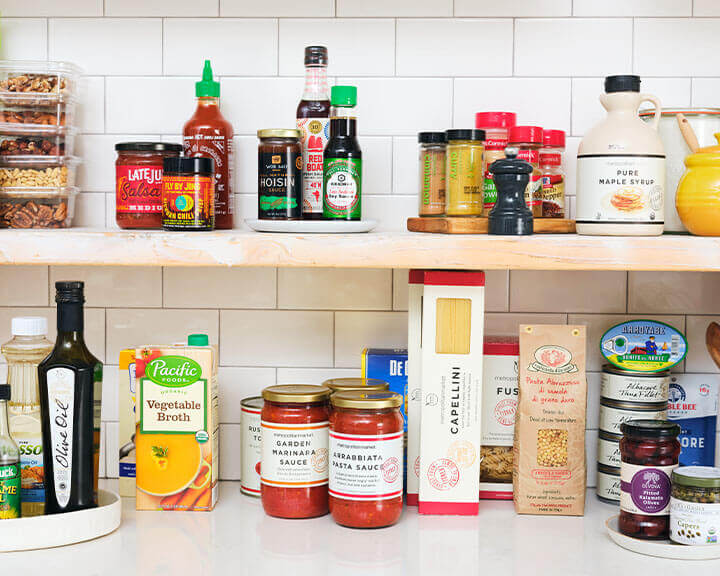
Building a well-stocked pantry isn’t usually something we do all at once. It’s a process—one that always starts with good intentions but sometimes ends with us staring into the depths of our shelving, wondering why we have two unopened bottles of Worcestershire sauce and six types of flour, but no dinner. Turn your pantry into your own mini grocery store by stocking it intentionally and reliably refilling what you use each time you shop. Start with our twenty basics, which are frequently recruited for dinners launched by something from the fridge, freezer, or garden. Since they can be combined for meals that really do all come out of the pantry, smart stocking can also extend the time between trips to the store and increase flexibility in your nightly dinner schedule. Bonus: they might also introduce new-to-you ingredients that spice up your cooking routine.
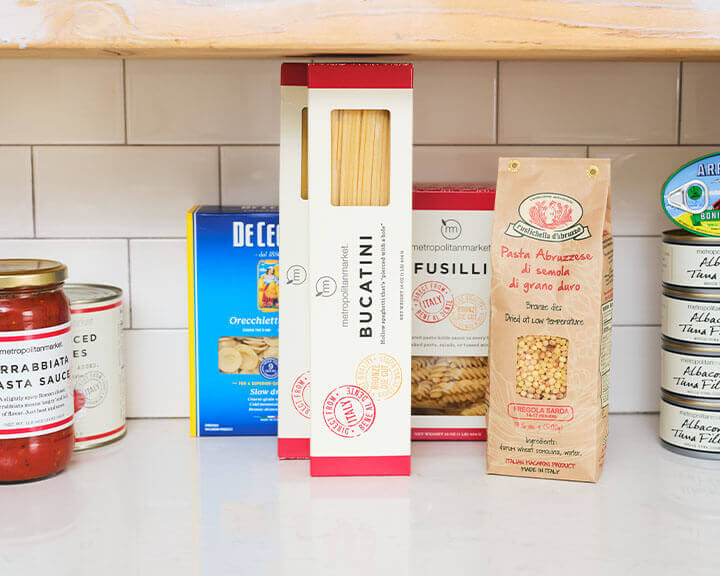
Short and Long Pasta
Dried pasta is a pantry staple for a reason. It’s one of the first things most of us learn to make, and while it may seem pedestrian, pasta earns its spot at the top of quick dinner lists because it’s easy, inexpensive, and flexible. Keep a box or two of bronze die-cut pasta on hand. These shaped and textured pastas, like Metropolitan Market Fusilli, allow sauce to cling for an extra punch of flavor, as in this simple recipe. No bread in house? Add orzo or small shells to fortify soups. Missing a particular type of noodle for a recipe? Experiment by using spaghetti for yakisoba or bucatini for chow mein.
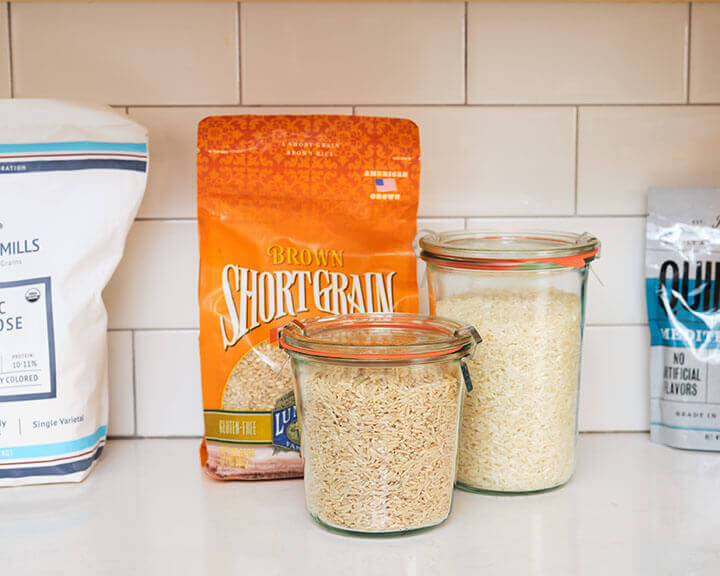
Rice
Stock multiple types of rice and you'll be ready for a quick side, main dish, and even dessert. Long-grain white rice is ideal for serving with Thai or Indian curries and making into pilaf. Short-grain white rice makes delicious grilled rice balls and leftovers are perfect for easy fried rice. Wild rice makes a great addition to salads, and arborio is perfect for paella or risotto. Both short and long-grain rice can also be made into delicious puddings.
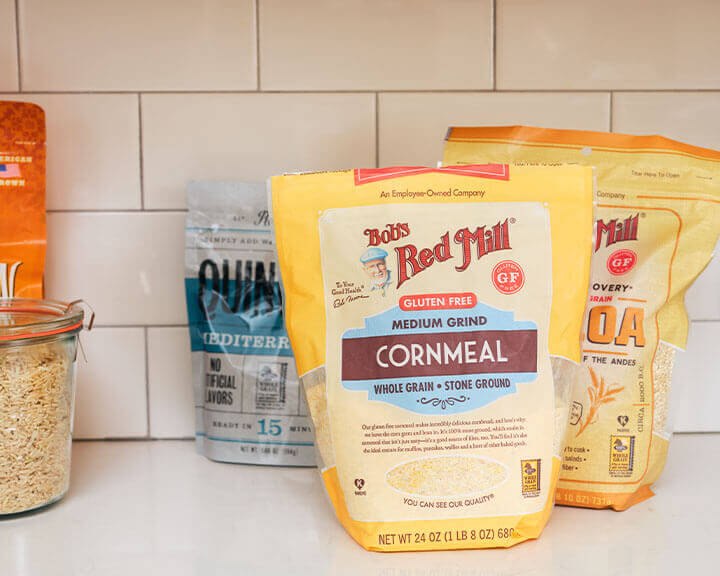
Quinoa and Cornmeal
Having a variety of grains on hand makes quick dinners a lot more diverse. Protein-packed quinoa is a great base for salads, grain bowls, and soups, and it’s just as easy to cook as rice or pasta. Cornmeal can be used to make grits, polenta, or cornbread and it’s helpful for homemade pizza.

Canned Beans
Besides being an affordable, nutritious way to add protein to any diet, canned beans are super versatile. Add canned chickpeas to salads or whirl them into homemade hummus. Drop white beans into soups and stews. Black beans provide a boost to quinoa bowls, breakfast burritos, and chili.
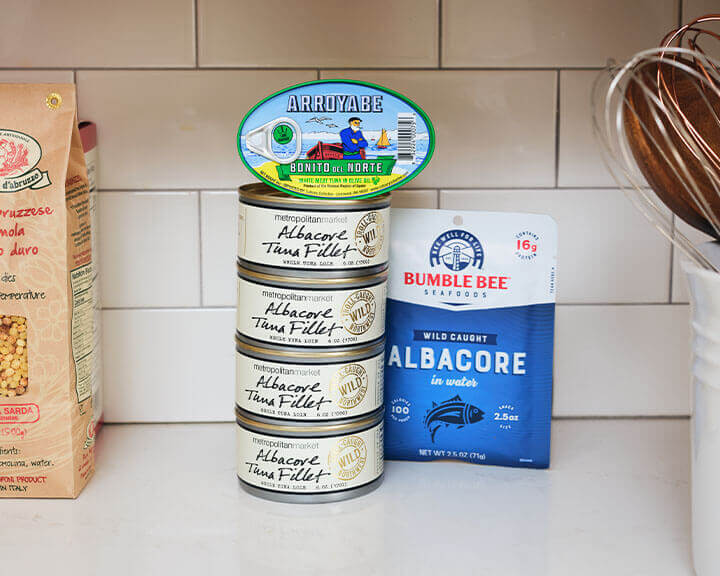
Line-Caught Tuna
While canned tuna is a longtime go-to for quick sandwich makings, it’s also useful at dinnertime. Our Metropolitan Market Albacore Tuna Fillet is cut from the loin and cooked in the can for superb flavor. It's perfect for this 4-ingredient, Spanish-style stew or flaked into this easy Mediterranean salad. It can also be made into pantry sushi with nori sheets and seasoned short-grain rice.
Whole Nuts and Peanut Butter
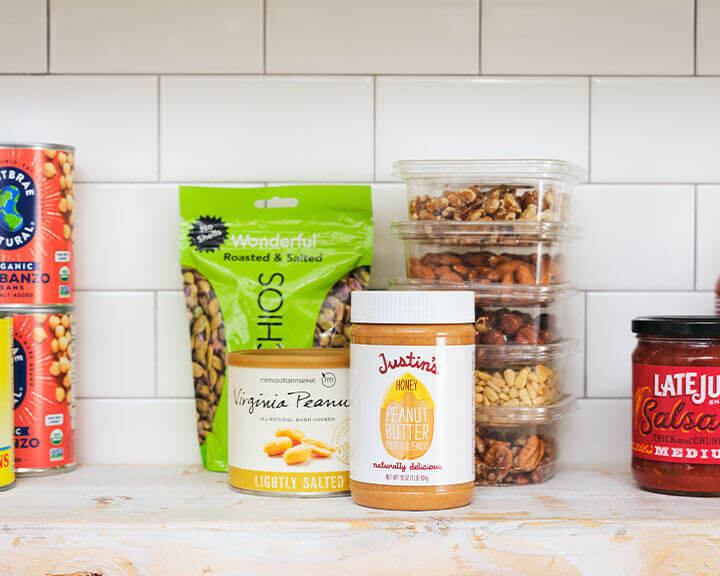
Nuts are a great handheld snack, add crunch to morning yogurt, and make salads more interesting. Find a few you like–almonds, walnuts, pecans, and peanuts are a great place to start. Peanut butter (or any other nut butter) is also a great staple for sandwiches, as a dip for apples, celery, or crackers, or as a base for a quick peanut dipping sauce for tofu or grilled chicken.
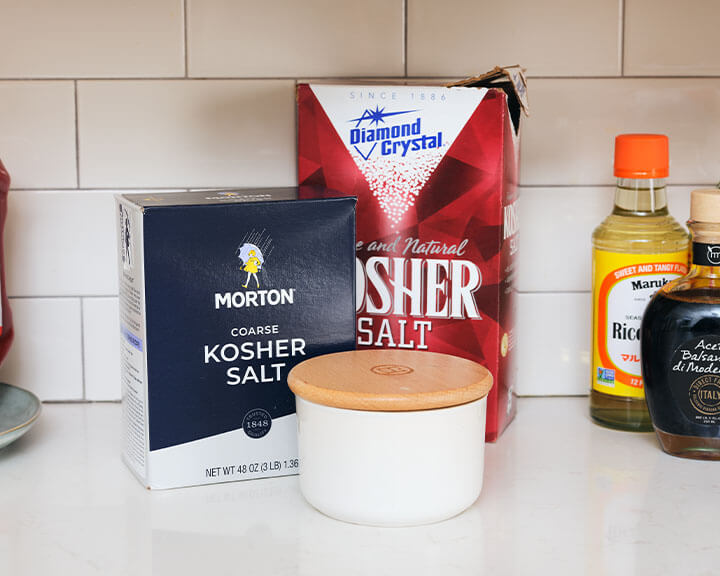
Kosher Salt
Regular iodized table salt often lends a chemical flavor to foods. Keep kosher salt (such as Diamond Crystal or Morton’s) on hand for regular daily use. Note that because of the way the salt is made, one teaspoon of Diamond Crystal will taste less salty than one teaspoon of Morton’s. Diamond Crystal has about half the sodium of Morton’s by volume! Learn more here.
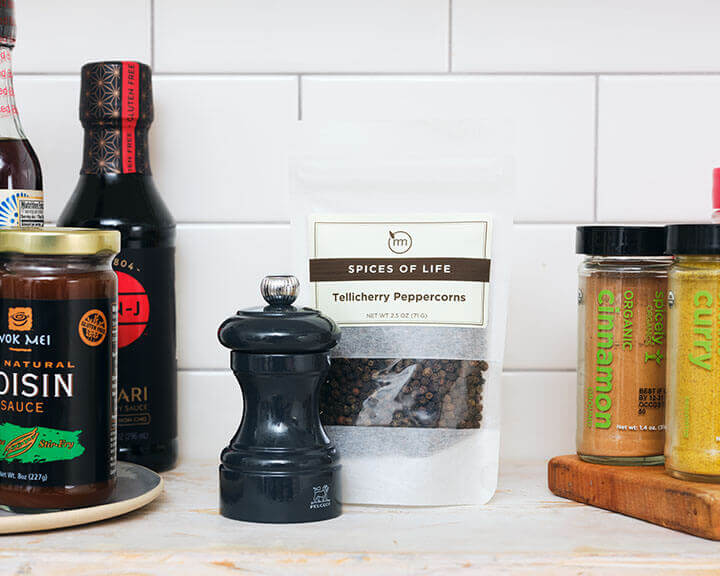
Whole Black Peppercorns
Freshly ground pepper has more flavor than pepper that’s been pre-ground. Invest in a pepper mill if you don’t have one and keep black peppercorns on hand. A few good grinds are all you need for simple dishes where pepper is the star ingredient (say, Salt and Pepper Shrimp or Cacio e Pepe).
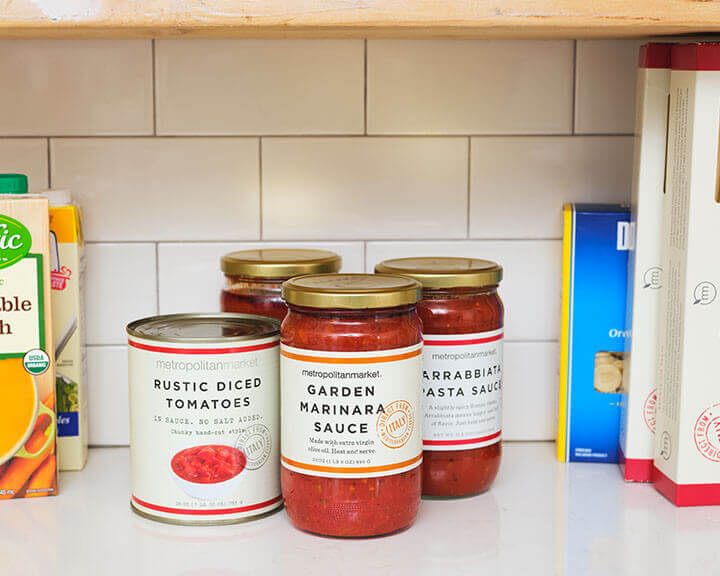
Pasta Sauce and Canned Tomatoes
Next time you shop for pasta sauce, slow down; shelf-stable tomato products are kitchen workhorses that drastically cut prep time without sacrificing quality. Lean on Metropolitan Market products, which are imported directly from Italy, for simple pasta dinners or easy braised dishes with "cooked-all-day" flavor. Recruit canned tomatoes for quick homemade soup, hearty lentil stew, or rustic tomato salsa.
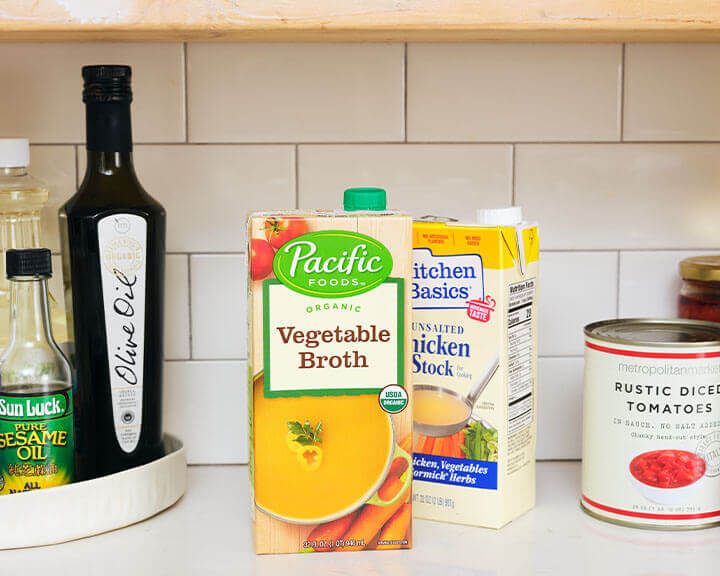
Chicken and Vegetable Broth
Broths add more flavor anywhere you might otherwise use water—like in cooking rice, grains, soups, stews, and meats. For the most control over your cooking, look for types with low or no sodium, so you can adjust the salt to your taste.
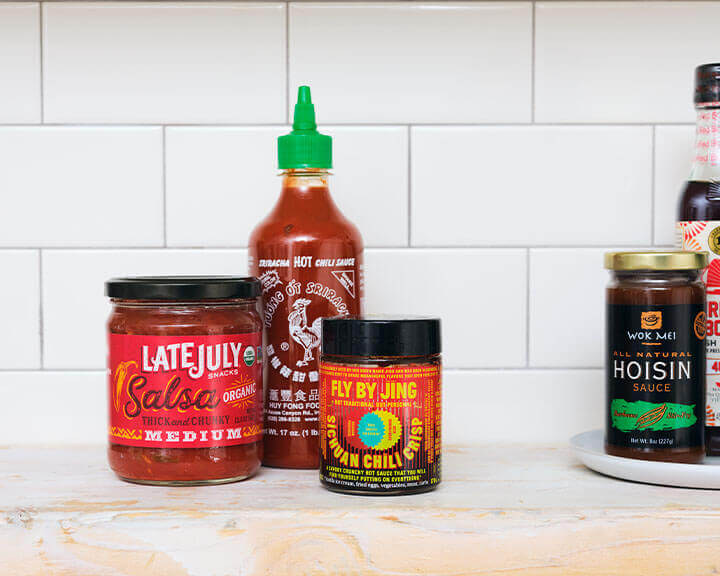
Salsa, Sriracha, and Chili Crisp
Dial up the heat of any dish with a splash of zingy hot sauce. Start by finding ones that match the cuisine you’re making. For Mexican-inspired meals, keep red and green salsa on hand. For Vietnamese or Thai-style dishes, add a dash of sriracha. Then explore and experiment. You'll discover that some hot sauces transcend borders. For example, Szechuan-style chili crisp is not only delicious on stir-fries, but also great on eggs and delicious atop roasted cauliflower soup.
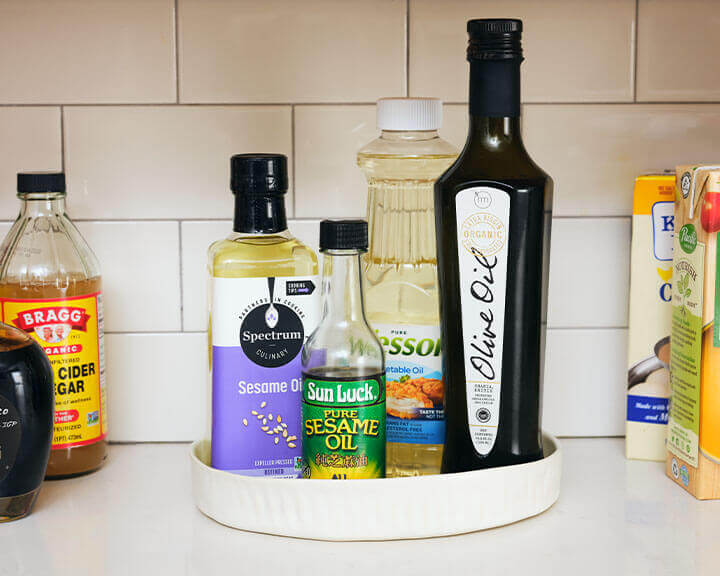
Cooking Oils
Two things to keep in mind when purchasing cooking oil is its flavor and smoke point. You can't go wrong with Metropolitan Market Organic Extra Virgin Olive Oil which is delicious and versatile. It has a mild flavor that makes it perfect for a variety of uses—from whisking into vinaigrettes to quickly sautéing vegetables. For searing and frying, you'll want something with a high smoke point. Vegetable or canola oil does the trick and since it has a neutral flavor, it's also great for baking. Additionally, keep a bottle of toasted sesame oil in your cupboard (note that toasted sesame oil is darker in color and used differently than regular sesame oil). As it has a low smoke point, it's not meant for cooking. Rather, use it to make Asian dressings and marinades.

Assorted Vinegars
Vinegars add a bright, acidic punch to foods, offering the right counterbalance to flavors that are naturally rich, earthy, or creamy. Apple cider vinegar pairs beautifully with pork. Mild rice vinegar is the key to many Japanese dishes, and white vinegar is the cornerstone of any pickle project, whether assorted pickled veggies or quick pickled shrimp. To add acid with a touch of sweetness, use syrupy aged balsamic vinegar, such as Metropolitan Market’s authentic Aceto Balsamico di Modena, which comes straight from Modena, Italy. It’s delicious drizzled over fish, veggies, cheese, and even vanilla ice cream.
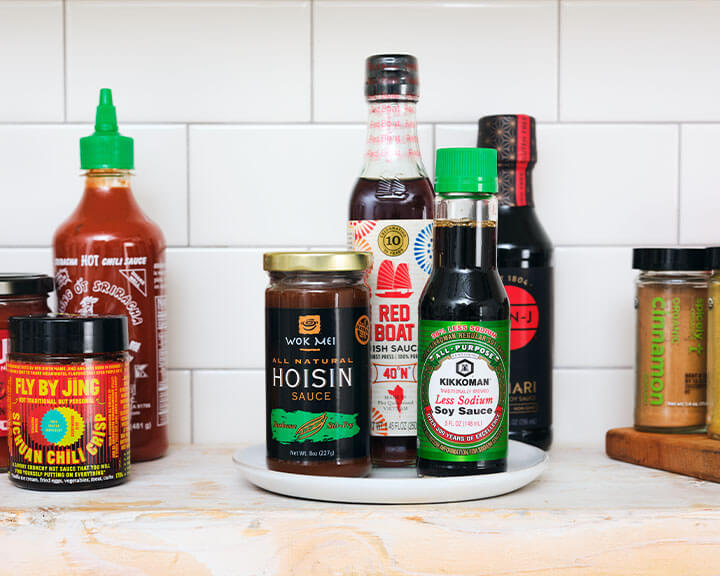
Soy, Hoisin, and Fish Sauce
Beyond oils and vinegars, many jarred sauces hold the secret to great flavor. Soy sauce, brewed from fermented soy beans and wheat, or its cousin tamari—which is made without wheat and has a richer soy taste but less saltiness—both add deep umami flavor. Hoisin is a fruity, thick brown sauce made with soy, vinegar, sugar, sesame oil, and spices, and is often used in Cantonese cooking. Fish sauce, made from dried anchovies, gives an earthy, salty flavor to foods, and is essential for Vietnamese and Thai dishes such as pho and curry.
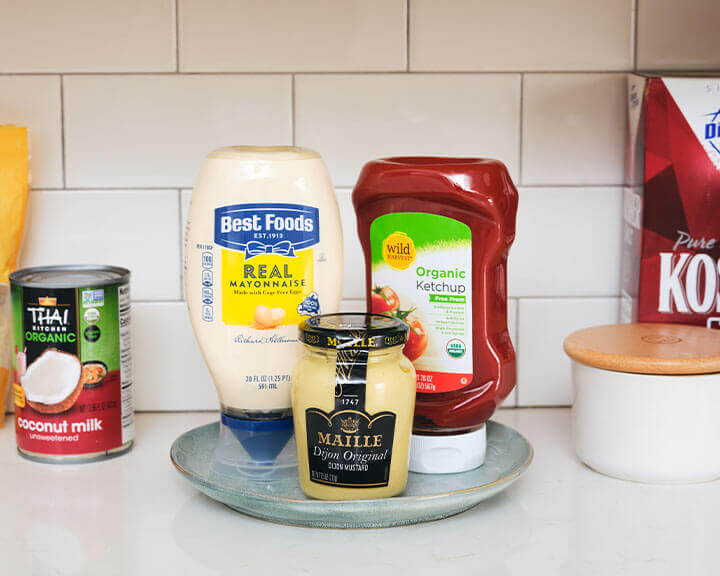
Ketchup, Dijon Mustard, and Mayonnaise
In addition to their usual roles at a hamburger joint, the three most classic condiments can help in daily cooking, too. Keep ketchup around to make homemade barbecue sauce, cocktail sauce, or pad Thai. Dijon mustard is good for vinaigrettes and marinades. Mayonnaise is a great binder, useful for potato salads, but also try it slathered onto the outsides of sandwiches before grilling, or even as a moistening agent in chocolate cake.

Olives and Capers
Think of the pickles and preserved vegetables aisle as a way to add a spunky, acidic component to anything that needs a little leveling up. For example, olives brighten this Mediterranean tuna salad while capers deliver punch to this roasted cauliflower dish. Olives can also be added to charcuterie boards and capers make a great addition to bagel spreads.

Ground Spices
You know that spices add flavor, but since they lose their punch over time, try to use regularly and keep as fresh as possible. Popular options include cumin, curry powder, red pepper flakes, garlic powder, and cinnamon. Add or subtract based on what you use most often.
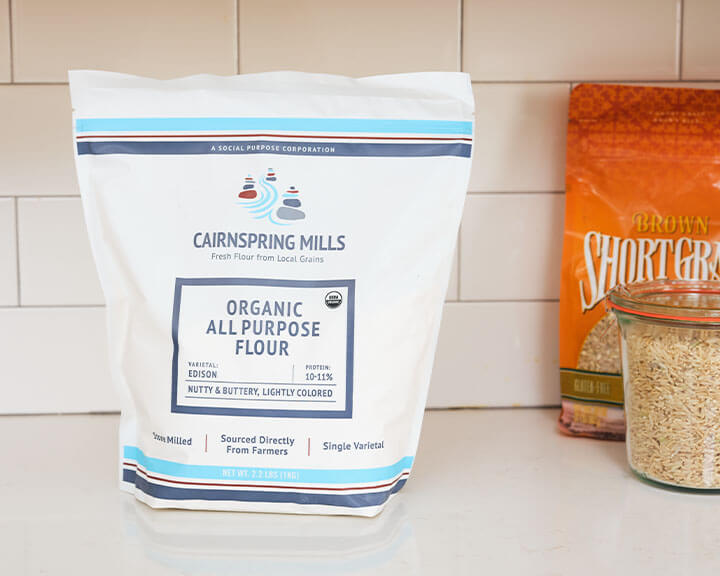
All-Purpose Flour
The vast majority of baking relies on all-purpose flour, which is just that—a flour whose gluten and protein levels are meant for all kinds of baking, from breads and pizza crust to muffins and cakes. Look for a local producer (like Cairnsprings Mills). They tend to have better flavor, texture, and nutrition. Keep flour well sealed between uses.

Sugar, Honey, and Maple Syrup
For baking, sweeteners aren’t as interchangeable as you might think. The different textures of various sugars change the way baked goods rise and react with one other. For this reason, it’s useful to have an assortment on hand so you can follow recipes exactly. Most bakers use granulated sugar, light brown sugar, and confectioners’ sugar most frequently, but honey and maple syrup are also flavorful, less refined alternatives that are gaining popularity.

Coconut Milk
For making sauces and simmering meats and tofu, always stash a can or two of coconut milk. It’s also a good secret ingredient in cocktails and smoothies, a great way to add body to smooth vegetable soups, and a delicious base for cooking rice. Note that the full-fat kind has much more flavor. Also, coconut milk separates naturally in the can, so don’t be surprised when half the can’s contents are solid upon opening.
